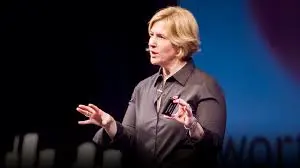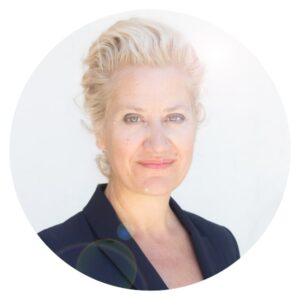Book Summary: Daring Greatly
Brené Brown’s book Daring Greatly: How the Courage to Be Vulnerable Transforms the Way We Live, Love, Parent, and Lead explores the power of vulnerability and how embracing it can lead to deeper connection and authenticity. Drawing on her extensive research into courage, worthiness, and shame, Brown reveals how vulnerability is not a weakness but a profound source of strength. She challenges the cultural myths that equate it with fragility and instead argues that it is the foundation of meaningful relationships and wholehearted living.
This book is particularly relevant for those on a healing journey, as it speaks to emotional resilience and self-compassion. If you have struggled with self-worth, perfectionism, or the fear of showing up fully in your life, Daring Greatly shares some great insight into freedom and authenticity.
Pause here and take a deep breath. Place a hand on your heart. Say to yourself on the exhale: 'I am enough.'
The Power of Vulnerability
Brown presents research and composite case studies demonstrating how vulnerability is essential for human connection and emotional well-being. She explains that avoiding vulnerability can lead to disconnection, anxiety, and feelings of shame. Instead of viewing vulnerability as a risk to be avoided, Brown encourages embracing it as a key to deeper relationships and personal fulfillment. I encourage you to explore vulnerability at your own pace, recognising that it is a key to deeper relationships and personal fulfillment. Vulnerability does not mean sharing everything with everyone, but rather learning to trust ourselves in how and when we open up.
Vulnerability is the birthplace of innovation, creativity, and change.
Brené Brown
Vulnerability is not about becoming more exposed — it is about becoming more deeply connected to yourself and others. For many who have lived with chronic illness or emotional distress, vulnerability has often felt dangerous, leading to patterns of self-protection, isolation, or people-pleasing. Brown’s research reminds us that true courage is not about pushing past discomfort but about learning to honour and trust ourselves first. Vulnerability begins within — by creating inner safety, listening to our emotions with compassion, and allowing space for both strength and tenderness to coexist.
Vulnerability and Emotional Healing
The insights in Daring Greatly align with core principles of this healing journey and point to the need for self-compassion. Brown’s research helps illustrate why deeply ingrained fears of shame and unworthiness can keep individuals from fully engaging with life. Healing is not about avoiding discomfort but about learning to embrace it gradually, with awareness and courage.
Vulnerability isn’t just an emotional experience — it’s also deeply tied to the nervous system. When we have experienced chronic stress, illness, or unprocessed negative events, the mindbody system may have learned that being vulnerable is unsafe. Healing from chronic complex conditions is not about rushing into vulnerability, but about slowly expanding our capacity for it in a way that feels safe and nourishing. This is why nervous system regulation, self-compassion, and Structured Rests are foundational parts of this process.
- This book speaks to the principles of emotional healing, building resilience, and nervous system regulation.
- Brown highlights the importance of self-compassion as a tool for overcoming shame and fear.
- She suggests that healing requires engaging with vulnerability rather than shutting it down.
This process is not always easy and can sometimes feel overwhelming. However, learning to navigate vulnerability with self-compassion is a vital step toward emotional freedom. Vulnerability is not about oversharing or exposing oneself recklessly; it is about showing up authentically in relationships and life.
If you’re exploring these ideas and wondering where to start, my First Steps to Recovery Mini-Course is designed to help you begin to reconnect with yourself in a compassionate and structured way. The healing journey begins with self-acceptance and safety.
The Development of Perfectionism
Brown argues that many of our struggles with vulnerability stem from societal expectations and early childhood experiences. She identifies common patterns that prevent people from embracing vulnerability:
- Fear of judgment or rejection
- Perfectionism and the need to prove worthiness
- Shame and the belief that we are not enough.
One of the composite case studies Brown shares is about a woman who grew up in a household where emotional expression was discouraged. She learned that vulnerability was a weakness and developed a perfectionist coping strategy to earn approval. Over time, this led to deep feelings of inadequacy and burnout. Through Brown’s work, she discovered that true connection and self-worth do not come from perfection but from embracing imperfection and allowing herself to be seen.
For many of us who have lived with chronic illness, perfectionism is not just about achievement — it’s about safety. We may have learned that being “good” and “doing everything right” will protect us from pain, rejection, or even worsening symptoms. But healing is not a test. We don’t have to do it perfectly to be worthy of rest, joy, and love.
The Science Behind Daring Greatly
Brené Brown uses a qualitative research method known as grounded theory. This research is qualitative, not clinical — meaning she gathers deep personal narratives rather than running lab-based studies. This doesn’t make it any less valuable — many of the most profound insights about emotional healing come from lived experience. This approach involves collecting and analysing data from interviews and personal narratives to develop theories based on individuals’ lived experiences. She shares composite case study “stories” drawn from her extensive research to illustrate concepts related to vulnerability, shame, and wholeheartedness. These narratives serve to contextualise her findings and make the research more relatable to readers.
Brown references how embracing vulnerability impacts:
- Emotional Regulation:
Brown delves into how vulnerability involves experiencing uncertainty and emotional exposure, which can lead to personal growth and resilience. She emphasises that embracing vulnerability allows us to manage our emotions more effectively, fostering a deeper understanding of ourselves. - Interpersonal Relationships and Connection:
She highlights that vulnerability is essential for building meaningful connections. By allowing ourselves to be seen authentically, we create opportunities for genuine relationships and a sense of belonging. - Self-Worth and Authenticity:
Brown discusses how confronting vulnerability helps us overcome feelings of shame and inadequacy, leading to a stronger sense of self-worth and authenticity. Embracing our imperfections enables us to live more wholeheartedly.
Her research aligns with findings in psychology and neuroscience that show how embracing vulnerability leads to greater well-being. While vulnerability can feel uncomfortable, working with these concepts offers valuable insights into how emotional patterns shape our relationships and self-perception.
Key Takeaways from Daring Greatly
The key message of Daring Greatly is that vulnerability is not something to be feared — it is the gateway to deeper connection and emotional freedom. When we allow ourselves to be seen, imperfections and all, we create space for authenticity and true belonging. Brown’s work reminds us that healing is not about pushing past discomfort but about embracing ourselves with self-compassion and care. For those on a healing journey, these insights offer a powerful reframe: we do not have to strive for perfection to be worthy of love and connection.
- Vulnerability is not weakness; it is the key to deeper connection and courage.
- Perfectionism and shame are blocks that we need to learn to dissolve in order to lead to authenticity and healing.
- Self-compassion is essential for building emotional resilience.
- Healing begins when we begin to learn to allow ourselves to be seen and start to embrace our imperfections.
Meet the Author: Brené Brown

Brené Brown is a researcher, a professor, author, and speaker known for her work on vulnerability, shame, and courage. She has written several best-selling books, including The Gifts of Imperfection, Daring Greatly, and Braving the Wilderness.
Brown’s work is deeply personal and research-based, blending storytelling with scientific insights to make complex psychological concepts accessible to everyone.
Amari's Perspective
Daring Greatly: How the Courage to Be Vulnerable Transforms the Way We Live, Love, Parent, and Lead offers transformative insights, and brings a new concept to light – a research-based understanding of how to become happy and whole through “wholehearted” living. This work can potentially also bring up deep emotions for those who have struggled with shame and perfectionism. If you live with chronic illness, this can be even more complex — many of us have been dismissed, disbelieved, or felt the need to perform “wellness” for others. Brown’s work reminds us that we don’t need to prove our worth — we are already enough, exactly as we are.
One of the biggest takeaways for me in Brené Brown’s work was recognising how perfectionism is a coping mechanism that often develops in response to shame or a fear of rejection. Many of us learn to equate success and approval with self-worth, but Brown’s work highlights that true belonging comes from authenticity, not performance.
If these ideas resonate with you but feel overwhelming to explore alone, I’d love to help. Healing is not about forcing change—it’s about learning how to feel safe enough to embrace who you already are. I invite you to try a Guided Healing Practice to support your journey with self-compassion and care.
Be kind to yourself. You are enough.
Next Steps: Where to Go From Here
Come back to these insights whenever you need them. Healing happens through repetition, through revisiting what resonates and allowing new understandings to settle with time.
If this book summary has sparked something in you, you might enjoy exploring:
💗 A Guided Somatic Healing Practice – Short exercises on the blog are designed to help you shift out of fight-flight-freeze.
💗 Visit the Resources Hub – A central space where you’ll find blog posts, guided healing practices, and in-depth articles and mini-courses to help you deepen your understanding of mindbody healing.
Trust that what you have started here is enough. There is no rush, no urgency — only an unfolding journey, one step at a time.
This is the beginning of something beautiful. 💗
💗 Meet The Author 💗

Amari Love
Amari Love is a coach and writer who specialises in mind-body-spirit healing for chronic illness. With postgraduate degrees in English Literature, Writing, and Film, and having completed additional studies in Somatic Healing, Trauma Recovery, Gut Health and Meditation, she brings a rare blend of intellectual insight and heart-led guidance. Drawing deeply from her own journey of recovery after decades of chronic invisible illness, cancer and Longcovid, her work is grounded in the principles of TMS (The Mindbody Syndrome), Neuroplasticity, and Emotional Integration — supported by a spiritual approach to wholeness and inner alignment.
Amari is a registered health coach with the UKI Health Coaching Association, reflecting her commitment to high standards of integrity and compassionate, science-backed care. She also cares deeply about making this path more visible — so that others, and future generations, have access to real answers that go beyond managing symptoms.
This work is here to help you rewire your brain, restore the nervous system, and reclaim a life of clarity, balance, and peace.
Disclaimer: The content in this article is shared for educational and reflective purposes only. It is not intended to replace personalised medical advice, diagnosis, or treatment. Please consult a qualified healthcare professional before making decisions about your health or wellbeing.


